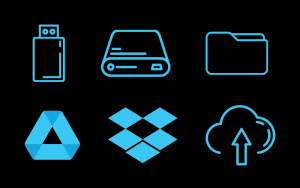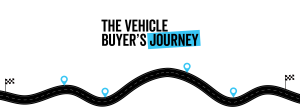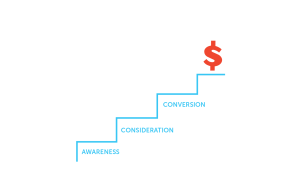The struggle is real. Trying to organize a myriad of marketing assets across multiple locations and franchises can feel like trying to run an 8-year-olds’ soccer practice. Some kids are playing keep away down by the goal, some are actually listening to you, and some are off in the meadow, picking daisies. How do you get them all on the same playing field, with the same goal?
It’s not easy.
In the marketing world, franchisees often struggle with the goal of brand consistency. It can be hard for teams to find and utilize brand-approved materials for a uniform look. Many run outdated, inconsistent marketing campaigns, and others waste money on direct mail reprints because they don’t know where the originals are. Even in the most organized marketing teams, it can be tricky to keep track of the various versions and ensure everyone is on the same page of the marketing playbook.
Here, we’ll look at best practices for organizing and optimizing your marketing assets across your locations. Let’s get started.
Related: Marketing Materials for Brand Growth
The Basic Approach: Local Storage and Shared Drives
Option 1 – Local Storage (USBs, Hard Drives)
This method is the equivalent of keeping your treasures buried in different spots with no map. Sure, it works for those who use their own organization system, but for a multi-location brand? Chaos.
Pros: This is a simple, low-tech solution that is familiar to most of us.
Cons: There is no way to maintain version control since files are not usually shared in a systematic way. It is very easy for files to get lost or outdated.
Best for: Small, centralized teams with minimal assets.
Option 2 – Cloud Storage (Google Drive, Dropbox, OneDrive)
Cloud storage sounds great in theory, but without a system that includes controls, it gets messy fast. Files can end up duplicated, mislabeled, or even lost in the digital void. Many times, teams strive to use standardized naming conventions, but in the rush of the day, files get dumped haphazardly and can be hard to locate. Teams may make unauthorized changes without permission control. And without version control, this system is ultimately ineffective.
Pros: Accessible, easy to share files.
Cons: No version control, messy folder structures, hard to manage permissions.
Best for: Teams using familiar platforms for simple collaboration needs—without the need for formal oversight.
The Smarter Approach: Centralized Digital Asset Management (DAM)
Option 3 – Digital Asset Management (DAM) Systems
DAM systems are like implementing a digital librarian for your assets. They do keep everything organized and searchable. However, they do not help you print and distribute materials. You’ll need to enlist the help of a professional printer for that.
Pros: Stores and organizes marketing files in a central repository for all team members to access.
Cons: Good for storage but lacks fulfillment and distribution capabilities.
Best for: Smaller teams that need structured storage but don’t require ordering and distribution tools.
The Smartest Approach: Brand Management Platforms
Option 4 – Brand Management Platform (Storage + Distribution + Ordering)
We recommend this marketing asset management option because it handles every need. Imagine your franchisees accessing approved up-to-date materials, customizing them where allowed, and placing an order without needing to involve the corporate team. It’s the dream, with:
- A centralized asset library: Stores all branding, print, digital, and promotional assets.
- Custom permissions for franchisees and corporate: Ensures each location only accesses the right materials.
- Built-in print-on-demand and fulfillment: Locations can order directly from the system and either pay for it or use approved corporate funds.
- Real-time reporting and usage tracking: Understand exactly which assets are being used and which are not.
Pros: Stores, organizes, prints, and fulfills all marketing assets with permission-based control to protect brand integrity while allowing for localized customizations.
Cons: Initial set up costs are greater.
Best for: Multi-location brands that require consistency and personalized messaging by location.
Which Solution is Right for You?
| Storage Option | Pros | Cons | Best For |
| Local Storage | Simple, no tech needed | No version control, files get lost | Small teams with minimal assets |
| Cloud Storage | Accessible, easy sharing | Messy folder structures, no version control | Teams with simple collaboration needs |
| Digital Asset Management (DAM) Systems | Centralized and organized | No fulfillment or distribution | Structured storage for small teams |
| Brand Management Platform | Full control, storage + fulfillment | Initial setup cost | Multi-location brands needing consistency |
Related: Brand Management Platforms Level Up Multi-Location Marketing
Based on your marketing goals, there are various solutions that can meet your needs. At Ironmark, we highly recommend brand management platforms for their versatility. Our secure, cloud-based proprietary brand management platform, Ignition, enables multi-location teams to create, maintain, and print/fulfill marketing assets from one consolidated repository. That kind of alignment keeps your brand on track, empowers every team to execute confidently, and lays the groundwork for scalable, consistent growth.
This marketing asset management system makes it a dream to collaborate. Ignition integrates with e-commerce tools for seamless ordering and shipping, and your corporate team can also pre-approve materials and budgets to keep spending controlled. With the right marketing asset management solution, you can finally bring all teams onto the same digital playing field—no matter where they’re located. Now that’s the best practice for all (and we’re not talking about the 8-year-old soccer practice). It’s time to win!
Don’t miss our next article in this series, “Consistent and Personalized Marketing: Here’s How to Have Both.”




